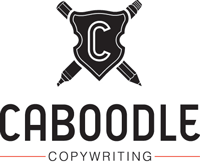So you’ve invested in a fancy shmancy website. You’re throwing money at pay-per-click ads and remarketing. And voila, you’ve got a steady stream of online traffic. But (and it’s a big one) you aren’t getting enough enquiries or sales. Well, maybe you’re screwing up your calls to action.
What’s a call to action (CTA)?
A CTA is where you ask your visitors to do something. Click the button. Fill in the form. Book a room. Reserve a seat. Make a payment. Send an email. Call a hotline. Do the hokey cokey. Turn around.
That’s what it’s all about – compelling a reader to take action. It’s the first step in the closing process. And, on websites, CTAs are often featured on buttons.
How do you unscrew your calls to action and buttons?
If you’re so inclined, there are lots of digital peeps around who can help you with split testing, so you can gradually work out which CTAs and buttons work best for you. (In fact, you can test and refine every element of your website, from colours to headlines to images to body copy…)
Alternatively, here are some simple things you can try to make your calls to action more compelling and effective:
- Use a verb. Now. Try starting your CTAs with a verb (a doing or action word). It helps create a sense of urgency, without feeling too pushy. And maybe try ending with ‘now’ or ‘today’ or ‘pronto’ or something to elevate that sense of urgency.
- Keep it short and sweet. Remember, shorter is better (unless you want something off the top shelf). The sooner you get to the point, the more likely it is that your visitor will too.
- Stick with the first person. Generally, addressing the reader as ‘you’ (second person) is website copywriting best practice, but CTAs might be different, as this study shows (emphatically). Try using the first person ('I' and ‘my’) instead. For example, you might have a button on your website that says 'Make my calls to action irresistible'.
- Make the value or benefit clear. Wherever possible, don’t just ask your visitor to do something (take action) – give them a reason to do it. From simple calls, such as ‘Click and save’ through to more explicit CTAs, like ‘Make my spots disappear’, it can often pay to put the value or benefit front and centre.
- Stop stressing and engage a copywriter. Well, we would say that, wouldn’t we? But it’s true. We do this stuff for a living, so we have an instinctive feel for what works and what doesn’t, as well as how to keep your calls to action on-brand.
“Excuse me, but isn’t the plural ‘call to actions’?”
No. If the army repeatedly calls for new recruits, they aren’t ‘repeatedly making call to enlists’. If you make several calls to the police, you haven’t made ‘several call to polices’, have you? Of course not.
So, next time you hear someone say ‘call to actions’, set them straight.
Want more tips and passive-aggressive advice about plurals? Check out our copywriting blog (and read some of our copywriting, messaging and branding projects while you’re there). Better still, get in touch.
Paul Leonard is an award-winning copywriter and creative director. He has plied his creative craft in the UK and Australia for more years than he cares to mention, working with clients of all shapes and sizes across an equally diverse range of industries. When he’s not building brands and crafting copy, concepts and campaigns, he enjoys running, drinking iced coffee and writing profiles about himself in the third person.
